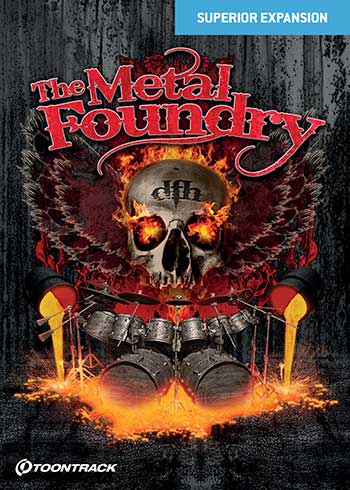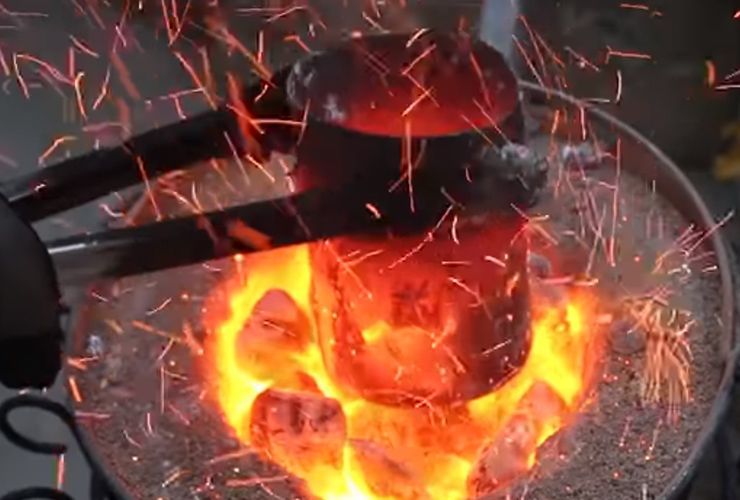Exploring the transformation of Metal Casting: How Innovation Shapes Modern Foundries
Wiki Article
Discovering the Art of Metal Casting: Strategies and Applications in Modern Foundries
Metal casting is a classic craft that integrates creativity with design accuracy. From old strategies to contemporary improvements, this process has developed significantly. Various approaches, such as sand casting and lost-wax casting, display the versatility of the medium. At the same time, developments like 3D printing are reshaping exactly how factories operate. As the lines in between capability and artistry blur, one must consider exactly how these developments effect both traditional methods and contemporary applications. What exists in advance in this developing landscape?The Principles of Metal Casting
Metal casting, a critical procedure in production, includes pouring molten metal right into a mold and mildew to attain a desired form. This method offers as a foundation in the manufacturing of complicated metal elements across numerous markets. Key components of metal casting include the selection of materials, which can vary from aluminum to steel, each selected for its certain buildings and application suitability. The procedure begins with mold and mildew creation, which can be made from sand, metal, or porcelains, depending upon the casting approach made use of. The molten metal is after that very carefully put into the mold and mildew, where it solidifies and cools. Vital aspects such as temperature level control, cooling price, and mold design greatly influence the final item's high quality and features. Additionally, comprehending the physical and chemical homes of the metal help in optimizing casting efficiency, ultimately boosting the performance of the manufacturing process and ensuring top quality outcome customized to details needs.Conventional Casting Strategies
Conventional casting methods encompass a variety of approaches that have stood the examination of time, demonstrating their efficiency in generating detailed metal parts. One noticeable technique is sand casting, which employs a combination of sand and a bonding representative to develop mold and mildews. The convenience of sand casting permits for the manufacturing of diverse forms, making it suitable for both large-scale and small-scale production. One more remarkable strategy is financial investment casting, often made use of for precise and complicated geometries. This technique includes creating a wax pattern that is covered in a ceramic shell, which is after that heated up to remove the wax, leaving a dental caries for molten metal. In addition, pass away casting is utilized for high-volume manufacturing, where molten metal is injected right into reusable steel mold and mildews. Each of these standard methods remains appropriate, showcasing the craftsmanship and skill intrinsic in the art of metal casting, while satisfying the needs of different industries.Modern Innovations in Metal Casting
As markets advance, technologies in steel casting are reshaping production processes and enhancing performance. Advanced modern technologies such as 3D printing and computer-aided layout (CAD) are reinventing mold production, enabling elaborate designs that were formerly unattainable. These approaches assist in quick prototyping, decreasing lead times and fostering creative thinking in item advancement.Furthermore, the integration of automation and robotics in shops is enhancing procedures, decreasing human mistake, and raising safety and security. Smart sensors and real-time monitoring systems make it possible for exact control of temperature and product homes, guaranteeing greater quality end results.
In addition, sustainable methods are emerging, with the use of recycled products and energy-efficient heaters, reducing ecological effect. The adoption of advanced alloys and composite products is additionally increasing the possibilities of metal casting, leading to more powerful and lighter components. Generally, these modern technologies are transforming steel casting right into a more effective, accurate, and environmentally responsible industry.
Applications Throughout Numerous Industries

While diverse sectors increasingly rely upon metal casting, the technique's flexibility plays a crucial duty in meeting specific application requirements. In the automobile field, steel casting is essential for producing engine components, transmission real estates, and various other complex parts that need accuracy and sturdiness. The aerospace sector take advantage of light-weight casted elements, ensuring both performance and gas performance. Furthermore, the building and construction industry utilizes metal casting for architectural elements, such as beams and supports, improving the integrity of bridges and structures.
In addition, the power market employs metal casting for wind turbine blades and various other substantial machinery that need to stand up to extreme problems. Clinical gadgets likewise see applications of steel casting, particularly in medical instruments and prosthetics, where accuracy is crucial - Aluminum Foundry. Overall, the convenience and reliability of steel casting make it essential across various areas, adding to the innovation of modern technology and facilities check here in modern culture
The Artistic Side of Metal Casting
Although frequently related to industrial applications, steel casting likewise locates its area in the domain of art, where proficient artisans transform molten metal into detailed designs and meaningful sculptures. This artistic side of metal casting includes diverse strategies, consisting of sand casting, lost-wax casting, and investment casting, each offering one-of-a-kind opportunities for creativity. Artists utilize these techniques to create works that vary from abstract forms to lifelike representations, enabling personal expression and commentary on contemporary concerns.
Often Asked Questions
What Precaution Are Important in a Steel Casting Factory?
Crucial precaution in a steel casting foundry consist of personal safety devices, appropriate ventilation, emergency situation procedures, training in taking care of molten metals, routine devices maintenance, and clear communication of threats to ensure worker safety and security and health and wellness. Aluminum Casting.Just How Do Environmental Laws Influence Metal Casting Processes?
Environmental regulations substantially affect metal casting procedures by mandating the use of cleaner innovations, minimizing emissions, and advertising waste management techniques. Conformity commonly needs financial investments in tools, training, and adjustments to existing procedures to decrease environmental impact.What Are the Common Problems in Metal Spreadings?
Common problems in metal castings consist of porosity, shrinkage, incorporations, and misruns. These concerns can occur from incorrect mold and mildew layout, poor temperature control, or contamination, ultimately impacting the architectural integrity and overall quality of the end product.Exactly How Is Waste Managed During Metal Casting Production?
Waste monitoring in metal casting production includes reusing scrap metal, applying reliable material use, and using advanced innovations to lessen waste. Foundries take on practices like sand improvement and appropriate disposal methods to minimize environmental impact.What Career Opportunities Exist in the Metal Casting Sector?
The steel casting sector uses varied career possibilities, consisting of duties such as foundry supervisor, metallurgical engineer, quality assurance examiner, pattern maker, and production supervisor, catering to various ability sets and knowledge in making processes.Metal casting, a critical procedure in manufacturing, involves pouring molten metal right into a mold and mildew to attain a preferred shape. In addition, die casting is used for high-volume manufacturing, where molten steel is injected into reusable metal molds. While diverse markets significantly count on steel casting, the method's flexibility plays an essential role in conference particular application requirements. Often linked with industrial applications, metal casting additionally discovers its place in the domain of art, where competent craftsmens change liquified steel into elaborate styles and expressive sculptures. Waste management in metal casting production entails reusing scrap metal, applying effective product use, and utilizing sophisticated innovations to decrease waste.
Report this wiki page